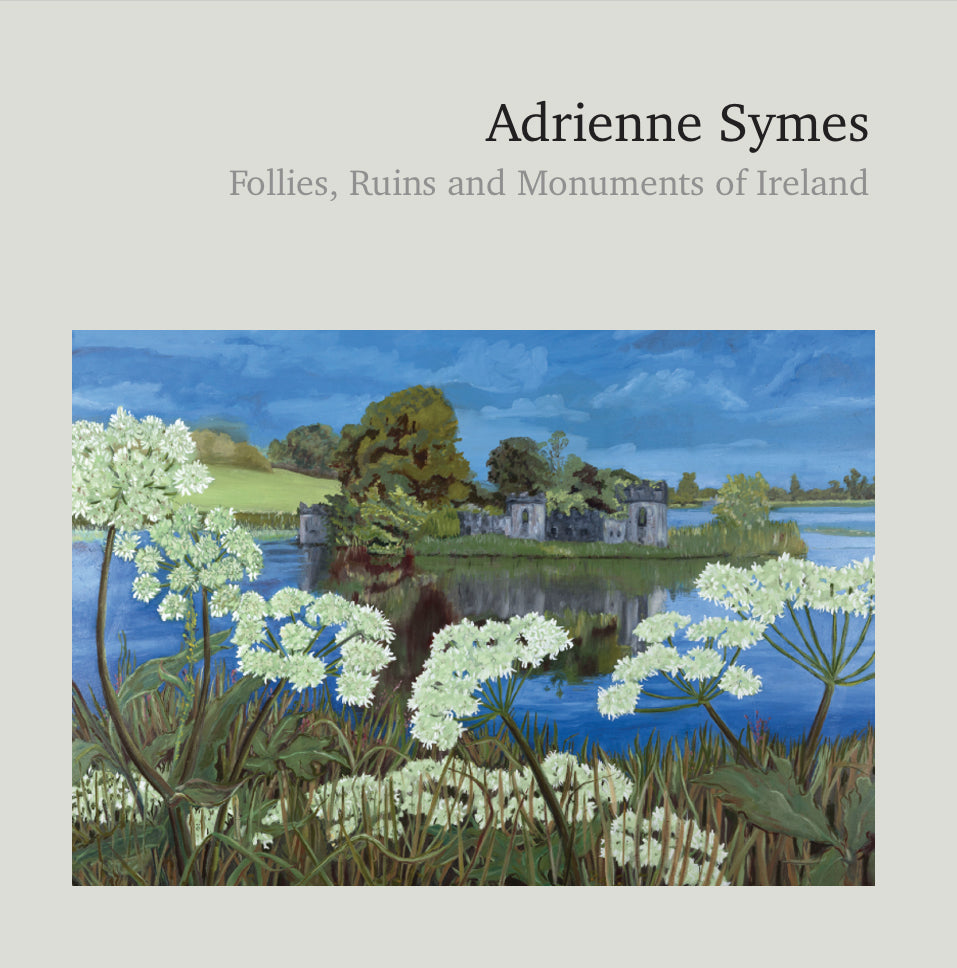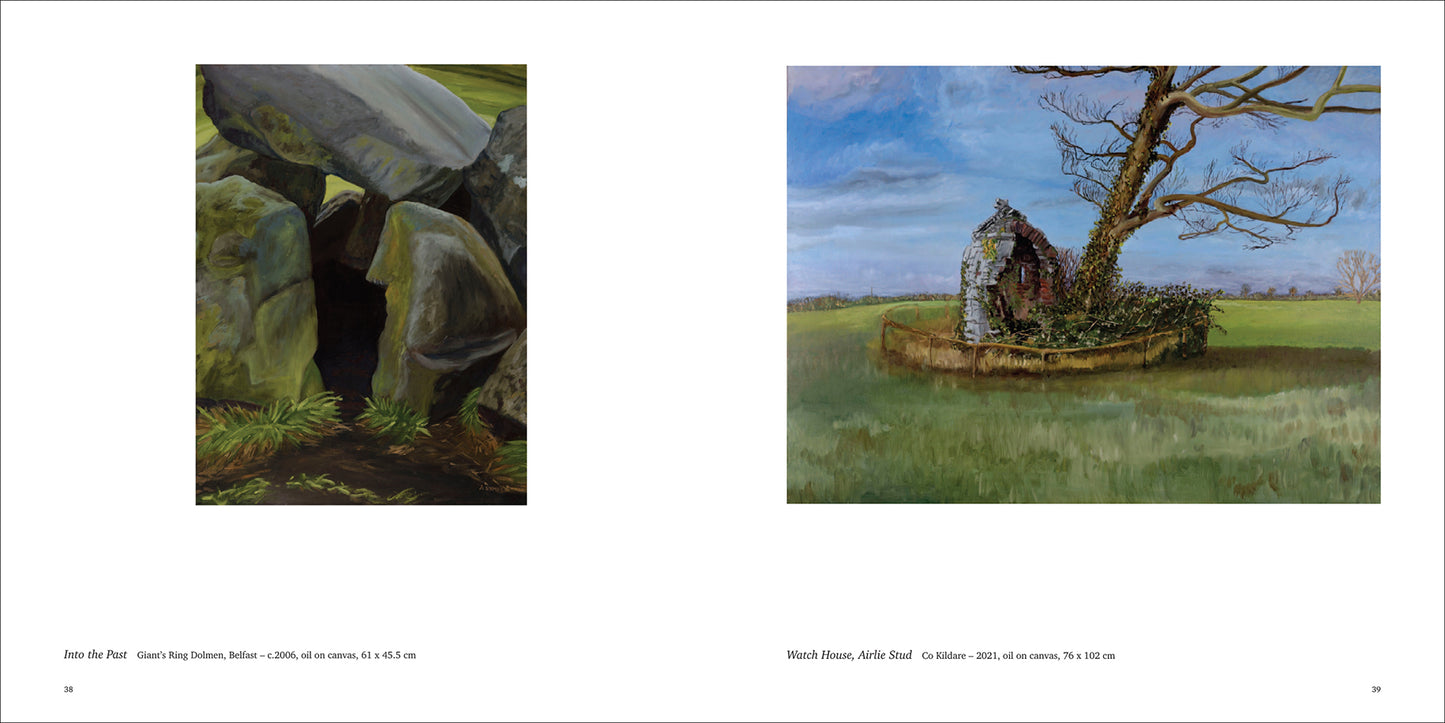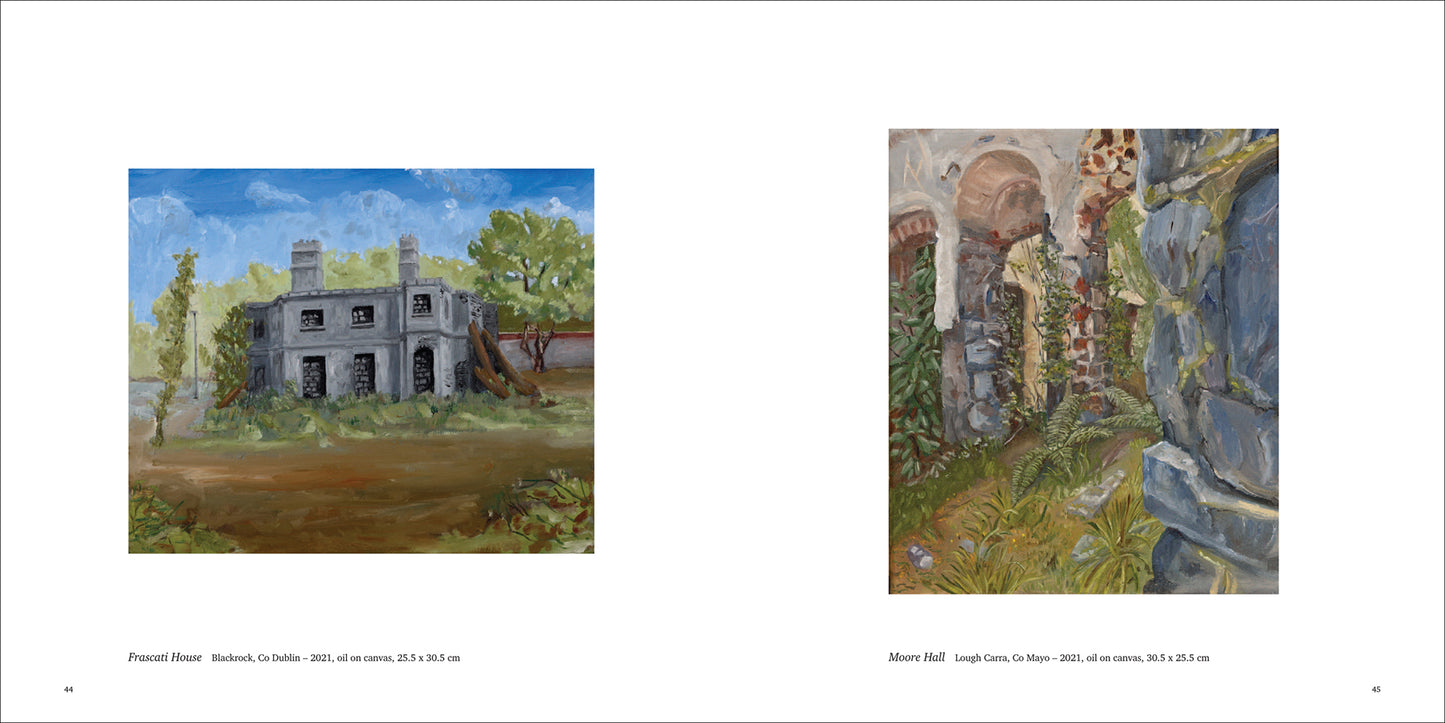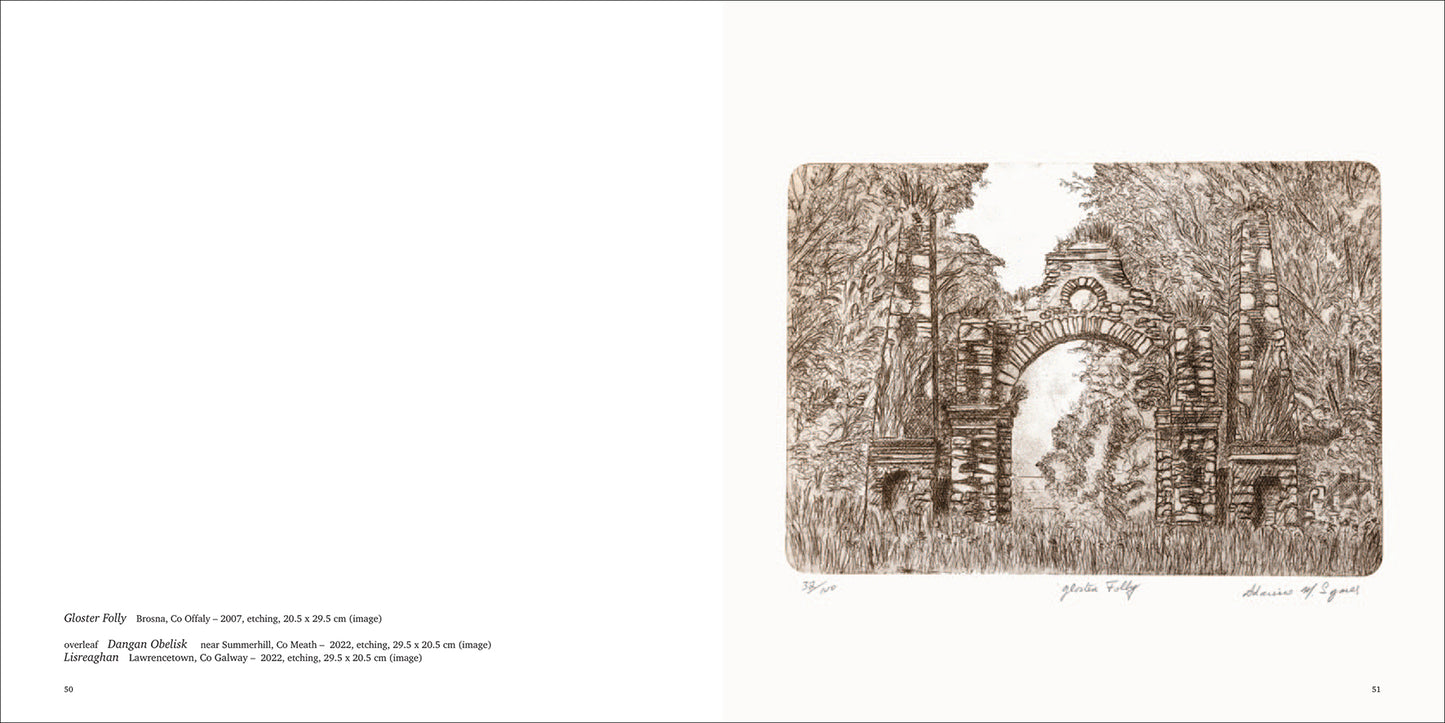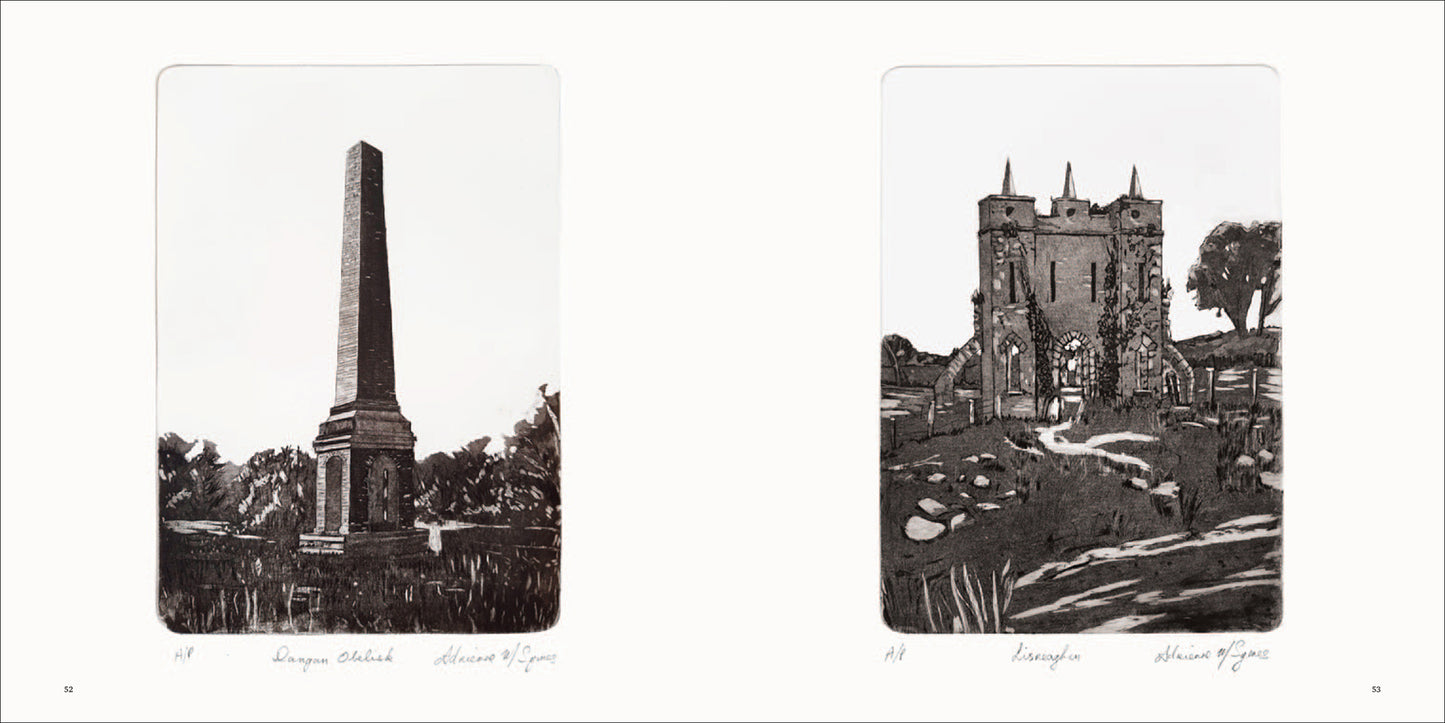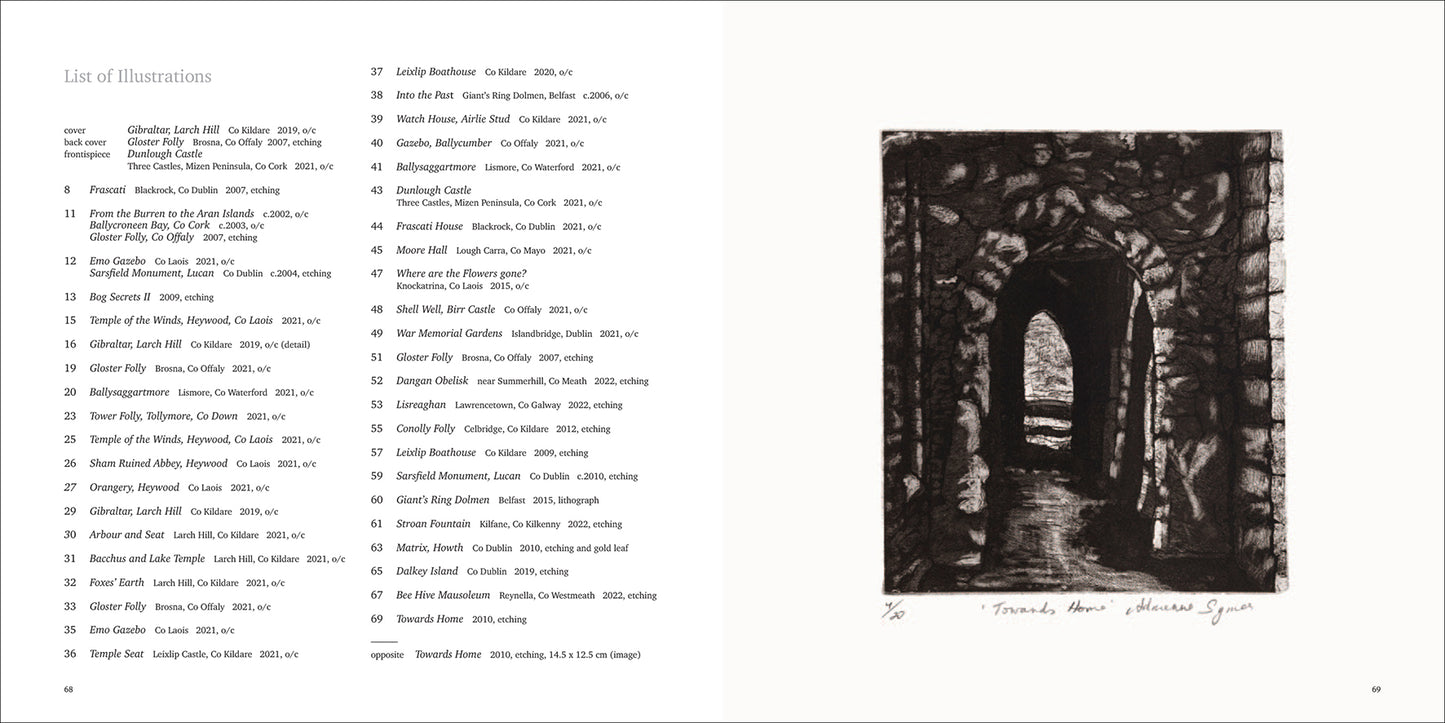Gandon Editions
ADRIENNE SYMES – Follies, Ruins and Monuments of Ireland
ADRIENNE SYMES – Follies, Ruins and Monuments of Ireland
Couldn't load pickup availability
Share
essays by Peter Murray, Glascott Symes, Jennie Taylor; intro by Primrose Wilson
ISBN 978 1910140 352 72 pages (hardback) 23x23cm 49 illus
“For many years, in addition to sketching and painting landscapes, Adrienne Symes has been recording the monuments and follies of Ireland, those enigmatic obelisks, towers and temples that dot the countryside, embodying yearnings for the glories of ancient Greece and Rome, or the hermetic retreats of monastic Ireland. Although traditional in approach, her work has a freshness and spirit that results from a long held preference for sketching out of doors. Travelling widely, she seeks out monuments, houses, gardens and follies, bringing to her subject-matter a sensitive and aesthetic appreciation of the patina of age and the effects of time. Her etchings and paintings are meditations on the effects of time, and the transience on human vanities. While Symes is skilled as a printmaker, her appreciation of Irish landscapes and buildings is equally evident in an impressive series of canvases, large and small, that she has completed in recent years.” — Peter Murray
_____
EXTRACT
"Many of Adrienne Symes’s images feature structures in the gardens and demesnes of Irish country houses. Most of these are popularly referred to as follies, although there is no satisfactory definition of this term, and their creators are often classified as eccentrics. Any attempt at a definition would have to include their role in enhancing the landscape, in giving pleasure and delight, and they may also serve a utilitarian function.
One group comes from demesnes that responded to the movement started in the early 18th century by William Kent (1685-1748) and Alexander Pope (1688-1744) in England to break away from very formal designs to create picturesque landscapes. This fashion was introduced to Ireland by Jonathan Swift (1667-1745) and Mary Delany (1700-1788). Symes has looked at four Irish examples of such demesnes that survive to a greater or lesser extent, as well as many individual follies. While many of the garden structures were fragile and made of wood and straw, others were more permanent. It is an irony that the houses in many of her examples have not survived while their follies have. This is largely due to the 20th-century destruction of so many large houses in Ireland."
— from the essay by Glascott Symes
|
CONTENTS Foreword Primrose Wilson CBE 7 |
